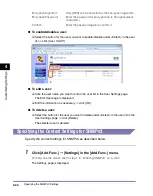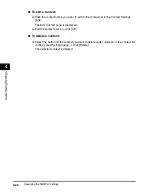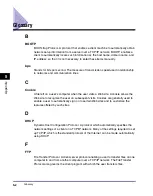
Glossary
5-3
Ap
pe
nd
ix
5
H
HTTP
Hypertext Transfer Protocol. The client-server TCP/IP protocol used on the World
Wide Web for the transfer of HTML (Hyper Text Mark-up Language) documents
across the Internet.
I
IEEE802.1X authentication
An authentication method that permits only supplicants (devices) authenticated by a
RADIUS (Remote Authentication Dial-In User Service) server to connect to the
network via an authenticator.
Internet Protocol (IP)
The underlying set of networking rules that describes how data is transmitted across
the Internet. Internet Protocol enables data from one computer to be split into
packets, and sent to another computer with a specific IP address.
IP address
Internet Protocol address. A network address used by IP (Internet Protocol) to specify
a computer or device on the Internet. Currently, two versions of IP are in use: IPv4
and IPv6.
IPv4
Internet Protocol version 4. An IPv4 address is a 32-bit numeric address, usually
written as four numbers delimited by periods. For example, ‘128.121.4.5’.
IPv6
Internet Protocol version 6. An IPv6 address is 128-bit long and consists of eight
groups of four hexadecimal digits delimited by colons. For example,
‘2002:0db6:58b1:02c3:3308:7a2e:6309:2665’. In an IPv6 network, a computer or
device can use multiple addresses, as represented by link local address, stateless
address, etc.
L
LDAP
Lightweight Directory Access Protocol. A network protocol that enables you to locate
organizations, individuals, and other resources, such as files and printers on a
network, whether on the public Internet or on a corporate intranet.
Summary of Contents for 1730
Page 2: ...imageRUNNER 1750i 1740i 1730i 1730 Remote UI Guide ...
Page 11: ...x ...
Page 27: ...Viewing the Machine Status and Information 1 16 Introduction to the Remote UI 1 ...
Page 117: ...Verifying SSL Server Certificates 4 40 Customizing Settings 4 ...
Page 118: ...5 1 CHAPTER 5 Appendix This chapter includes the glossary and index Glossary 5 2 Index 5 6 ...
Page 125: ...Index 5 8 Appendix 5 ...







































